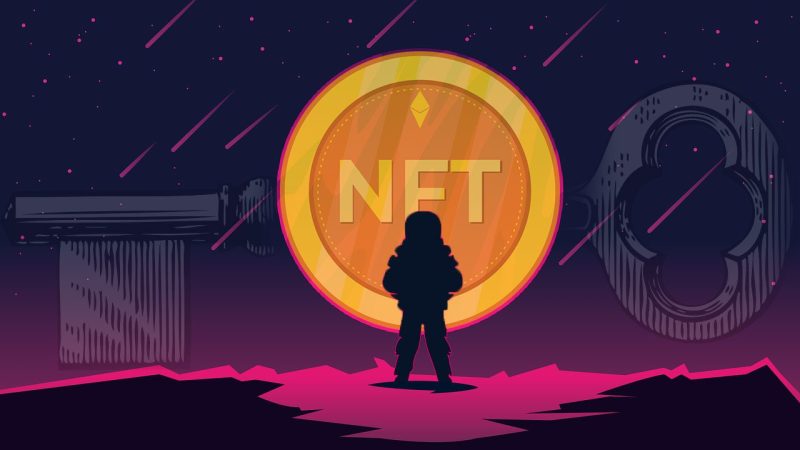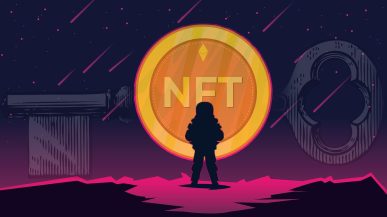Last Updated on February 6, 2023
How to Protect your NFT Artwork in the Digital Frontier
The world seems to be threading ever deeper into the digital space. If you are at all conversant with the online world, you most likely have heard of the word ‘NFT’. Recently the NFT technology has taken the art community, both novice artists and gallery spaces, by storm with its artistic revolution.
Generally, digital artworks, such as video, music, and photographic images, have been consistently undervalued compared to physical artworks. This was because digital artworks were easily reproducible and readily available online. Anyone could easily download a copy of it without the artist receiving a dime.
Even now, a digital thief can still download or screenshot a digital artwork freely, but with the development of the NFT technology, authentic ownership will be solely reserved for one person. Once the artwork has been minted, only the person with the minted edition has a right of ownership. This right of ownership, and proof of authenticity, is what makes the digital artwork valuable.
Indeed NFT has revolutionalized the art community, providing viable solutions for artists to protect, monetize and get due recognition for their digital works. Also, NFTs make it even easier for today’s artists to be less dependent on physical galleries to sell their work, and instead offer a cheap, transportable, and accessible means of selling artwork independently on multiple platforms.
In this article, we will discuss the role of NFT in artworks, NFT controversies, and how to protect your artworks.
What is an NFT?
NFT is an abbreviation for Non-fungible token which is a digital certificate proving ownership of a one-of-a-kind virtual or physical asset. NFT art is a digital item traceable in the digital world. NFTs can include any digitized artform eg. music, video, digital or digitized painting, memes, etc. You may have an original painting or photograph in print form, but in the digital space, there can be only one.
NFTs are regarded as ‘Non-fungible’ because an NFT collectible or artwork can not be interchanged with another artwork. For instance, you can not exchange the Monalisa painting with that of the last supper. Likewise, you cannot exchange the Monalisa with a copy of it, regardless of how good that copy may be.
While 2.9 Million euros for a Fake Mona Lisa may sound like a fair chunk of change, this still pales in comparison to the over $870 million estimated worth of the original.
However, this is not the case for fiat currencies or most cryptocurrencies which are considered to be fungible. This means that swapping a bitcoin coin out for another bitcoin will not increase or decrease the value of that digital currency, just as swapping a dollar bill with another won’t give you the ability to buy more with it.

But the rarity of an NFT is made possible through blockchain technology. This represents a decentralized record where all vital and unique information about an NFT art is stored. It is non-replica, indefinite, non-editable, and available for the public to view. Examples of blockchain currency that backs these non-fungible gems are Ethereum, Wax, Polygon, etc.
The Allure of NFT
Ever since NFTs entered the mainstream fully in 2021, there has been a lot of fuss about the exclusivity of NFTs, especially with big-name celebrities like Lionel Messi, Snoop Dog, Justin Bieber, etc. jumping on the NFT bandwagon.
So you may be wondering what the whole fuss about NFT is and why digital assets remain in demand. It is simply due to bragging rights? We humans tend to like the idea of owning something rare that nobody owns or just a few possess. In other words, with rarity comes exclusivity, and obtaining something exclusive signals a belonging to a special class of human, as the above-mentioned list of celebrities may attest to.
But in addition to the allure of rarity, a lot of NFT artists use blockchain technology to create a scarcity of digital assets. A creator can decide to mint only 1:1 artwork or mint their work in collections with a limited number in existence. Therefore, the promise of owning a work of rarity coupled with the fear of missing out on something exclusive helps to fuel the NFT craze.
Some artists have taken this appetite for NFTs and have turned the craze on its head by taking the crude and mundane and rarifying it via the NFT minting process, thereby challenging the concept of exclusivity and ownership. Take the NFT artist Pak for example. The image below of a neutral gray square is a copy of his NFT named “The Pixel” which sold at a Sotheby’s auction for $1.36 million.

Protecting NFTs from Fraud
Unfortunately, NFT’s rarity still can’t secure it completely from being copied or stolen. Although blockchain technology can document the origin of the NFT to the original minter, even after the Token has been resold a number of times, there are few if any controls protecting works from getting stolen prior to mint. As of yet, OpenSea, one of the world’s largest NFT minting and trading platforms doesn’t require proof of copyright on the pre-minted artwork.
And while platforms such as OpenSea and Rarible have grown so rapidly in the last few years, trying to find if your creative property has been reappropriated as an NFT can be like searching for a needle in a vast haystack. One method you can use to see if your artwork has been stolen and offered up as an NFT is to use the Google image search tool feature that will look for similar images to your original work. However, even if you succeed in finding cases of theft, legal action after fraud can also be a daunting task, as NFTs can be minted with relative anonymity.

While blockchain records are impossible to forge, the technology is easily misunderstood, resulting in confusion and making it easy for scammers to infiltrate. Like cryptocurrencies, NFTs are also susceptible to being hacked. In addition to Fake Art, identity theft, credit card fraud, and other phishing techniques, NFT trading can create a host of hazards in the digital marketplace.
How to Protect your NFT Artwork in the Digital Space
Indeed NFT has revolutionalized the art community, providing viable solutions for digital artists to protect, monetize and get due recognition for their works. Though there are many ways that your creative property can be comprised, the good news is that you can protect your artwork with the following:
1. Copyrighting: Like publishing art or creative work on the internet, copyright ownership is attributed to the creator of the NFT. The creatorship of the NFT is recorded on the blockchain and remains an intricate part of the work regardless of the owner of the NFT. Now, as an artist of original works, you may choose to file for copyright to protect your brand or concept, making it slightly easier to protect your rights in court if someone moves in on your digital turf.
2. Use a watermark: When you add a watermark to your NFT artwork it discourages impersonators from copying your work.
3. Keep Records: Save your work as a timestamp file on a hard drive and in the cloud.
4. Mint your original artwork: NFT has provided a viable solution for digital artists and collectors to safeguard their artwork by minting them before someone else does.
5. Create a brand or theme consistent with your artistic identity.
6. Consider dynamic files like videos, gifs, or audio overlayed visuals. These types of NFTs are more difficult to screen share and re-use.
The NFT has played a major role in artworks and the digital art community as a whole. It has great potential to transform the art community forever and it has proven this with the tremendous support and recognition it has given NFT artists. Yet, the jury is still out on whether NFT is mere hype or the future. What do you think?







